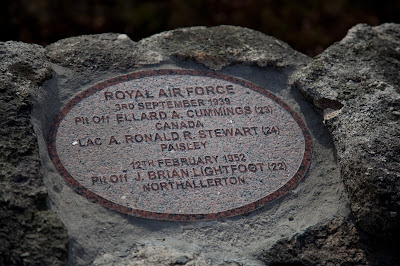Polphail – By Duncan Harley
Wall art is not entirely about pre-pubescent puerile penile fantasies and
homophobia. Much of the creativity implies a need to be heard and a desire to
communicate to a more adult world.
The graphic sexual images, rudely erotic comments and insulting narrative may in essence be a cover for the need to be understood or indeed misunderstood. “FUCK HITLER” when sprayed on a Stalinist inspired 1960’s damp concrete multi storey edifice may in reality be a subversive comment regarding planning policies.
The graphic sexual images, rudely erotic comments and insulting narrative may in essence be a cover for the need to be understood or indeed misunderstood. “FUCK HITLER” when sprayed on a Stalinist inspired 1960’s damp concrete multi storey edifice may in reality be a subversive comment regarding planning policies.
“Mo Mo is Fat” when painted on a fast food
outlet door is open to wide interpretation. Is Mo Mo fat because the business
owners don’t care about the hydrogenated fat content of the burgers on sale? Or
is this simply a meditative Buddhist take on the perception of a reality near
you. Try reversing the text.
The eastern oil boom came to Aberdeen some 40 odd years ago
and the effects are still resonating. Fast wealth, fast drugs, fast cars and
some extremely fast ladies abound. Stories of rags to riches and of course
success to poverty pervade.
For the Hamish Macbeth tagged westerners it was a wee bit
different. Think poor disempowered fisher folk, betrayed crofters and the
stealing, or much worse, of sheep.
Portivadie is
a prime example. The Loch Fyne village consisting of some cottagers, a family
run farm and around a dozen summer-time holiday hutters was bought over by a
government agency in the 1960’s.
Intent on building rigs for oil hungry Klondikers, the devil-may-care
career civil servants offered householders a deal. Get out or get forced out
was the message.
Keen to exploit the black gold, the UK government of the day
with the complete compliance of the Scottish Office focused on a site in
Argyll, which was intended to become an oil rig construction facility.
Despite extensive work costing the nation millions, the
white elephant of Portivadie was never used for its intended purpose. In a
moment of unmitigated madness, planners employed outdated thinking to an
industry which they completely misunderstood. The assumption was that oil platforms
should be constructed from re-enforced concrete despite the industry’s obvious move
to state-of-the-art steel-built drill platforms.
Shorelines were torn asunder; local folk were offered poor compensation
for dwellings owned over generations and buildings were bulldozed in a post
Highland Clearance apocalypse. Local landmarks such as the Watch Rock at
Portivadie were blown up and Pictish stones were thrown willy-nilly into Loch
Fyne.
No rigs were ever constructed or even ordered from the
Portivadie facility and the construction site now functions as a marina. Ironically
the Civil Service blunder’s continued as Hansard (03 February 1981 vol 998
cc147-54) records:
“£3.3 million of public money” was used “due to an
omission, an error, a blunder—call it what you may—by either the Scottish
Office or the Department of Energy, or both, the ownership of the village
passed to a company called Sea Platform Constructors (Scotland) Ltd. because
the Department or Departments failed to buy the land from it. Under the
provisions of Scottish law, the ownership of the village passed to the private
owners of the land on which the village was sited.”
The workers accommodation village built for the failed
project stood until quite recently. Full of bats it reeked of the detritus of
decades of neglect. It was never occupied.
In October 2009, a group of six graffiti artists decided to
paint the place. Armed with a few dozen gallons of paint plus some long
ladders, they transformed the derelict concreted-site into a post-Stalinist
art-installation.
The results were stunning.
We visited in rain in 2012 and were completely bowled over
since the graffiti graphics occupied entire walls. Rarely were there any words
and most of these were in good humour.
There were no “WANK IF YOU LIKE ME” comments
at Polphail. The most contentious phrase was “HAPPY BIRTHDAY SPARKAY” however
we failed to penetrate the innermost sanctum due to some deep puddles and a few
dead sheep.
So, we may have missed Sparkay’s less salubrious writings.
So, we may have missed Sparkay’s less salubrious writings.
In June 2012 the workers village at Polphail was put up for
sale. Word was that its status as an Argyll Heritage habitat for bats would
prevent demolition. The bats have been evicted however and the graffiti painted
buildings have now been torn-down.
Prior to the 2017 demolition, Glasgow photographer Brian
Cumming visited the site to document the changes. He recorded that “Polphail
is still very much derelict with not much having happened over the last few
years, it still really is a dark and gloomy mysterious yet fascinating place,
especially for creative people such as myself.”
The highly decorated grey Stalinist concrete workers gulag at Polphail has
now gone the way of that shredded Banksy balloon cartoon, but perhaps without
the humungous price tag.
Watch Brian’s video
on Polphail @: Eroded
Lifes
Duncan Harley is author of The
A-Z of Curious Aberdeenshire plus the forthcoming title: The
Little History of Aberdeenshire - due out in March 2019












Comments
Post a Comment